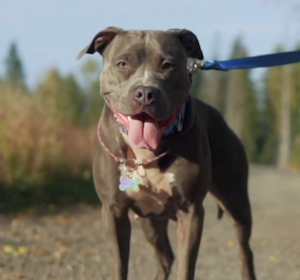 According to the Humane Society, fifty-one (51%) percent of canine victims are children. In fact, for children, dog bites constitute the second most frequent cause for an emergency room visit, according to a survey done by Weiss HB, Friedman DI, Coben JH “Incidence of dog bite injuries treated in emergency departments,” in the JAMA 1998;279:53.
According to the Humane Society, fifty-one (51%) percent of canine victims are children. In fact, for children, dog bites constitute the second most frequent cause for an emergency room visit, according to a survey done by Weiss HB, Friedman DI, Coben JH “Incidence of dog bite injuries treated in emergency departments,” in the JAMA 1998;279:53.
The question then becomes: why are so many dogs prone to attack a child or children. For a meaningful answer, the University of Pennsylvania’s Schools of Medicine and Veterinary Medicine, as well as the Children’s Hospital of Philadelphia (CHOP) entered into a collaboration.
Findings of the Penn Study
 The Penn data suggested canine attacks fall into two categories: attacks by familiar dogs versus dogs that escape and run loose or wild. Let’s talk about familiar dogs, first.
The Penn data suggested canine attacks fall into two categories: attacks by familiar dogs versus dogs that escape and run loose or wild. Let’s talk about familiar dogs, first.
Familiar Dogs
These attacks are not only the most common way dogs injure children, but these attacks are also most likely to involve the youngest (and most defenseless) victims: children seven or younger. In fact, these attacks often involve animals having no prior history of aggression. Unfortunately, younger children often grab canines and handle them roughly. This, combined with the child’s assumption of the dog as always “friendly” can lead to an attack. Here, prevention is key. Parents must teach children how to refrain from provoking a dog to attack.
Dogs that Escape
In the Penn study, bites in the second group generally involve kids over age 7 who had fallen victim to a loose dog while they were engaged in some activity, such as playing or riding a bike. Here, prevention requires community wide action to control animals through better own responsibility. Moreover, both police and animal control must enforce existing laws, requiring dog owners to control their canines. Children must also exercise awareness of their surroundings.
Importance of Education
Children must learn how to approach a dog. For example, don’t even stand over a dog, because any dog can feel threatened and lunge upward to attack, in self-defense. Read the canine’s body language before getting with bite range:
- Is the dog wagging its tail, happily?
- Is the dog pulling it’s ears back, scared?
- Is the canine stiff-lipped, about to growl?
Knowing One’s Surroundings and Assuming Every Dog is Dangerous
The University of Pittsburgh Medical Center (UPMC) has also provided insight into how older children — who fail to heed their surroundings — can fall prey to a serious attack. UPMC profiled one particular attack on a child, in the child’s own words, describing an attack on himself as a second grader:
It was a clear day in 1993, when I was invited as a wide-eyed eight-year-old to play street hockey with the older guys in the neighborhood. Fourth and fifth graders normally don’t ask a second-grader to join them. . . . The older kids welcomed me, and the game began.
Ten minutes into the game, a young girl appeared from the house in which a new family had recently moved. She ordered us to leave, because this was her street. . . . I saw my chance to get the puck, twirling it on the edge of my stick as though I were Mario Lemieux. I never saw the girl go back to the house, open the door and say the word, “Attack.” . .
When the 70 pound creature flattened me from behind, I remember the sound of my face scraping against the cement. “Who could be doing this to me?” I thought, while oblivious to the pain. Why would one of the guys check me from behind and beat me so heavily? Then I felt the blood gushing down the side of my face and neck and heard the growl. Instinctively I knew my life was in danger and covered my face, tucking my chin into my chest. Clenching my head in its jaws, the dog violently twisted as it tried to get to my throat. . . . The growing pool of blood was warm, and suddenly I felt an odd weakness and heaviness.
I had suffered over forty puncture wounds to my skull, my right ear was torn in half and detached, and there were gaping holes in my neck and shoulder.
More Information and Bringing a Claim For a Child
Contact us today for a free consultation today!
Let’s Get Started!
(412)400.5476